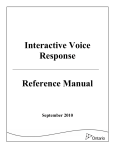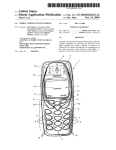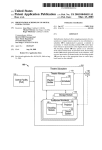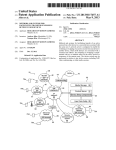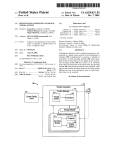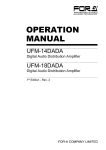Download 120/ L102
Transcript
US008359011B2 (12) United States Patent (10) Patent N0.: Zinn (54) (45) Date of Patent: NON-VISUAL INBOX SUMMARY FOR 6,311,076 B1 * MOBILE COMMUNICATION DEVICES 6,408,191 B1 * 6,892,081 B1* 6,895,257 B2* . Inventor: Ronald scotte Zlnn, Waterloo _ (73) Ass1gnee: Research In Motion Limited, Waterloo (CA) (*) US 8,359,011 B2 Notice: Jan. 22, 2013 10/2001 Peuhu et al. ................ .. 455/566 6/2002 5/2005 5/2005 Blanchard et al. . Elomaa ............ .. Boman et al. .. 6,983,169 B2 * V2006 vogel et a1‘ “““ “ 7,363,060 B2* 4/2008 45575501 Bernhart et al. 2002/0098831 A1* 7/2002 (jastell er a1, ,,,, ,, 2005/0108338 A1* 5/2005 Subject to any disclaimer, the term of this ..... .. 455/566 455/575.1 455/556.1 ..... .. 455/567 455/413 Simske et al. .............. .. 709/206 FOREIGN PATENT DOCUMENTS U.S.C. patent is154(b) extended by 732or days. adjusted under 35 2 OTHER PUBLICATIONS (21) Appl.No.: 11/675,136 Jabra BT8010’s user manual, 2006* (22) Filed: Feb. 15, 2007 * cited by examiner (65) Prior Publication Data Us 2008/0200149 A1 A 21 2008 ug' (51) Int_ CL H04M 1/725 Primary Examiner T Jinsong Hu ’ Assistant Examiner * San Htun (74) Attorney, Agent, or Firm * Jenna L. Wilson; Dimock Stra?on LLP (2006.01) (52) US. Cl. ................ .. 455/412.1; 455/412.2; 455/418; (58) Field of Classi?cation Search ............. .. 455/412.1, A mobile communication device is operable to receive and 455/412.2, 413, 414.4, 414.1, 550.1, 552.1, 455/556.1, 556.2, 557, 57515758, 90.3, 455/459, 466, 553.1, 566, 567, 57515758, 455/41844221, 5, 67; 709/206, 207, 204; 379/9301, 93,18; 370/3102, 328, 338, 3524356 See application ?le for complete search history. store messages in a de?ned message inbox. A user input device is provided to permit a user of the device to make a message inbox status query. In answer to the query, the device provides a non-visual response communicating one or more characteristics ofthe message inbox. Such characteristics are de?nable and the method of providing a non-visual response communication is con?gurable. The non-visual response 455/466 (56) References Cited .-_, 4/2001 130A ABSTRACT P otentially includes an audito 13’ communication that is P ro vided in response to a query made using an easy to access button located on the device. U-S~ PATENT DOCUMENTS 6,181,956 B1 1/2001 Koskan 6,212,408 B1* (57) 29 Claims, 3 Drawing Sheets Son et al. .................... .. 455/563 VOICE couuumcmou MODULE AUXILIARY l/0 I 1 30B 1 DATA toraréuuécmou :4 PL 130M ) . . ma “\ FLASH mom L m8 ' 11s SERIAL PORT HICROPROCESSUR OTHER MODULES SOFTWARE KEYBOARD '4 110 MICROPHONE OTHER DEVICE sussvsrzns ‘ TRkNSHlTTER 120/ SHORT-RANGE coummcmons L102 l 12 US. Patent Jan. 22, 2013 Sheet 3 of3 US 8,359,011 B2 Wait For Message Inbox Status Query 1 005 Receive Message Inbox Status Query 1010 t Check Current Query Options to Determine Scope of Query and Communication Type Selected 1 020 1 Review Current lnbox Contents as Speci?ed by Query and Current Options 1 030 NO Inbox Contents Match Query? 1035 FIGS Summarise Message Inbox 1 040 1 Communicate Characteristiqs) of Message Inbox Status to User 1 050 US 8,359,0ll B2 1 2 NON-VISUAL INBOX SUMMARY FOR MOBILE COMMUNICATION DEVICES to accept a message inbox status query from a user of the device, a response interface operable to provide a non-visual response to the device user, a processing subsystem operable to initiate the non-visual response by the response interface of TECHNICAL FIELD the device to the user in response to the user input interface The invention relates to Wireless communications. In par ticular, the invention relates to a method of communicating a accepting the message inbox status query, the non-visual response being capable of communicating one or more char summary of the contents of an inbox in a communications acteristics of the message inbox status to the user. The user input interface of the mobile communication device may additionally provide a button located on the exte rior of the device, the button being located to permit a user to readily access the button. The button of the mobile communication device may addi tionally provide a multi-function button, one function of Which is de?ned to be the message inbox status query. The user input interface of the mobile communication device may be operable to accept a spoken message inbox device to a user. TECHNICAL BACKGROUND With the advent of mobile personal communication devices capable of receiving messages having different for mats, it has been found desirable to include a visual interface to summarize the messages the user has received in each format. Typical Wireless mobile communication devices are capable of receiving both voice and text messages in a variety of formats including phone calls, forWarded voice messages, email, SMS (Short Messaging Service) and other text mes status query from the user. The mobile communication device may further be oper 20 able to receive and store messages of more than one message type, and in Which the message inbox is capable of compris sage formats. ing a set of received messages of more than one message type. In a further embodiment a machine readable medium com a message inbox until the user operates the device to delete or prises computer code executable on a mobile communication move the message to a storage location. When a user Wishes to determine Whether there are any neW messages of interest 25 device, the mobile communication device being operable to receive and store messages and to de?ne a dynamic set of listed in the message inbox for revieW, the user must visually Messages received by the device are notionally collected in received messages to comprise a message inbox, the device check the mobile communication device’s visual display. comprising a user input interface, a response interface, and a While a visual interface has proven to be a useful Way to processing subsystem, the computer code comprising: com summariZe the received messages to the user, such an inter face requires the user to direct his or her attention to the 30 puter code executable on the mobile device to enable the user input interface to be operable to accept a message inbox status interface to determine the contents of the inbox. This can be distracting to the user, or to others, in situations Where the user’s visual focus is required elseWhere such as driving, Walking on a busy street or attending a meeting. Since mobile communication devices are often Worn in a 35 query from a user of the device, computer code executable on the mobile device to enable the response interface to be oper able to provide a non-visual response to the device user, computer code executable on the mobile device to enable the holster or carrying case, vieWing the visual interface typically processing subsystem to be operable to initiate the non-visual requires removing the device from the holster or case to vieW response by the response interface of the device to the user in response to the user input interface accepting the message inbox status query, the non-visual response being capable of the inbox summary display. Thus, While visual revieW of the contents of the inbox is e?icient, the act of removing the device in order to vieW the display is potentially aWkWard or inef?cient. Further, for devices With Wireless headsets, the 40 device is often carried in an inside pocket, a hand bag or briefcase. It is therefore desirable to provide a system and method for alloWing a user to revieW the contents of a message inbox on 45 a mobile communication device Without having to access the device to vieW the display. 50 communication device is provided, the device being operable to receive and store messages and to de?ne a dynamic set of In draWings Which illustrate by Way of example only a preferred embodiment of the invention, received messages to comprise a message inbox, the device having a user input interface and a response interface, the FIG. 1 is a representational schematic of a mobile commu method comprising: receiving, using the user input interface, 55 contained Within a mobile communication device. FIG. 3 is a ?owchart depicting operation of a response application to summarize the contents of an inbox, according a message inbox status query from the user, upon receiving the message inbox status query, initiating a non-visual response to the user, the response interface of the device consequently providing a non-visual response to the user, the non-visual response communicating one or more character to a preferred embodiment. 60 DESCRIPTION OF THE PREFERRED EMBODIMENT According to an embodiment, a mobile communication device is operable to receive and store messages and to de?ne a dynamic set of received messages to comprise a message inbox. The device comprising a user input interface operable The user input interface of the device may additionally provide a button located on the exterior of the device, the button being located to permit a user to readily access the button and in Which the computer code executable on the mobile device is operative to accept the user inbox message status query in response to the user pushing the said button. In a further embodiment, a method of communicating one or more characteristics of a message inbox status of a mobile BRIEF DESCRIPTION OF THE DRAWINGS nication device. FIG. 2 is a representational schematic of a microprocessor communicating one or more characteristics of the message inbox status to the user. istics of the message inbox status. The method may further provide that the response to be communicated is de?ned by a pre-selected user option. Alternatively, the method may further provide that the response is one of an audible response or a vibratory 65 response. In a still further embodiment, a machine readable medium comprises computer code means executable on a mobile com US 8,359,011 B2 3 4 munication device for implementing a method of communi of a mobile communication device, the device being operable aging data items, such as e-mail, calendar events, voice mails, appointments, and task items. The PIM application is also preferably capable of sending and receiving data items via a to receive and store messages and to de?ne a dynamic set of Wireless netWork 140. Preferably, the PIM data items are received messages to comprise a message inbox, the device having a user input interface and a response interface, the Wireless netWork 140 With the device user’s corresponding method comprising: receiving, using the user input interface, data items stored or associated With a host computer system. a message inbox status query from the user, upon receiving the message inbox status query, initiating a non-visual response to the user, the response interface of the device consequently providing a non-visual response to the user, the Communication functions, including data and voice com munications, are performed through the communication sub cating one or more characteristics of a message inbox status seamlessly integrated, synchroniZed and updated via the system 100, and possibly through the short-range communi cations subsystem. The communication subsystem 100 non-visual response communicating one or more character includes a receiver 150, a transmitter 152, and one or more istics of the message inbox status. The system and method of a preferred embodiment Will be antennas 154 and 156. In addition, the communication sub system 100 also includes a processing module, such as a described in detail beloW, by Way of example only, in the digital signal processor (DSP) 158, and local oscillators (LOs) 160. The speci?c design and implementation of the context of a hand-held mobile communication device as illus 20 communication subsystem 100 is dependent upon the com munication netWork in Which the mobile device 10 is intended to operate. For example, a mobile device 10 may include a communication subsystem 100 designed to operate With the MobitexTM, Data TACTM or General Packet Radio Service (GPRS) mobile data communication netWorks and also designed to operate With any of a variety of voice com 25 munication netWorks, such as AMPS, TDMA, CDMA, PCS, GSM, etc. Other types of data and voice netWorks, both separate and integrated, may also be utiliZed With the mobile trated in FIG. 1 to 2. HoWever, it Will be appreciated that the principles of the invention apply to other mobile communi cation devices and the system is not intended to be limited thereby. The hand-held mobile communication device 10 includes a housing, a keyboard 14 and an output device 16. The output device shoWn is a display 16, Which is preferably a full graphic LCD. Other types of output devices may alternatively be utiliZed. A processor 18, Which is shoWn schematically in FIG. 1, is contained Within the housing and is coupled betWeen the keyboard 14 and the display 16. The processor 18 controls the operation of the display 16, as Well as the overall operation of the mobile device 10, in response to actuation of keys on the keyboard 14 by the user. Preferably the device device 10. In operation the mobile communication device 10 may receive messages in a variety of formats, all intended for the 30 communication devices. The housing may be elongated vertically, or may take on operation of the preferred embodiment such messages (for other siZes and shapes (including clamshell housing struc tures). The keyboard may include a mode selection key, or other hardWare or softWare for sWitching betWeen text entry and telephony entry. Additional function, poWer or mode selection keys may be incorporated into the sides or ends of 35 The messaging application de?nes a dynamic set of received messages that have not been deleted or moved to a storage location as being held in a message inbox. Different 40 device 10 are shoWn schematically in FIG. 1. These include a communications subsystem 100; a short-range communica tions subsystem; the keyboard 14 and the display 16, along With other input/output devices 106, 108, 110 and 112; as Well as memory devices 116, 118 and various other device sub systems 120. The mobile device 10 is preferably a tWo-Way 45 cation capabilities. In addition, the mobile device 10 prefer ably has the capability to communicate With other computer computer code executable on the device. As Will be apparent, 50 preferably stored in a persistent store, such as a ?ash memory 1 1 6, but may be stored in other types of memory devices, such as a read only memory (ROM) or similar storage element. In addition, system softWare, speci?c device applications, or implementations may de?ne the message inbox in different Ways. For example, the message inbox may be de?ned by copying or moving messages to a pre-de?ned data storage location in the device. Alternatively, such inbox messages may be de?ned by an inbox ?ag associated With each message or by a separate data structure Which effectively indexes into the set of received messages stored on the device. For the preferred embodiment, a set of the received mes sages is made identi?able as being Within a message inbox by RF communication device having voice and data communi systems via the Internet. Operating system softWare executed by the processor 18 is example email, SMS and voicemail format messages) are initially identi?ed in the device as being recent messages that have not been revieWed by the user. the housing. In addition to the processor 18, other parts of the mobile device’s user. Often messages are received When the user of the device is not in the process of using the device. Messages are therefore stored for later revieW by the user. In the device includes a vibration means as knoWn in the art of mobile 55 parts thereof, may be temporarily loaded into a volatile store, such a set of messages is dynamic: messages are added to the inbox as they are received by the device and are removed from the inbox by user actions such as deleting or moving such messages (otheruser actions, such as opening a message, may also remove the message from the inbox). Typically, characteristics of the set of messages making up the inbox are of interest to the device user. In the preferred such as a random access memory (RAM) 118. Communica embodiment device, a messaging application calculates a tion signals received by the mobile device may also be stored count of such recent messages and displays this count on to the RAM 118. The processor 18, in addition to its operating system func tions, enables execution of softWare applications 130A-130N on the device 10. A predetermined set of applications that 60 that message format to provide the user With a more detailed summary of the current contents of the inbox. Individual messages may be vieWed in more detail by accessing indi control basic device operations, such as data and voice com munications 130A and 130B, may be installed on the device 10 during manufacture. In addition, a personal information manager (PIM) application may be installed during manufac ture. The PIM is preferably capable of organiZing and man display 16. Icons may be associated With each of the different message formats and may be displayed along With a count for vidual message folders to revieW and access individual mes 65 sages. Upon receipt of a communication, the device 10 may alert the user to the arrival of a communication by one or more cues US 8,359,011 B2 5 6 Which are typically visual, audible or vibratory. The type of cue(s) used for each communication type may be pre-selected communicate the summary to the user in a non-visual fashion. The summary criteria may either be ?xed, or in a preferred embodiment are adjustable as a pre-selected user option. The summary criteria determine the scope of the revieW and sum mary. For instance, the revieW may comprise a summary revieW of the inbox to identify and communicate the presence by the user as an option. Typically users Will pre-select not to receive a cue for frequent non-real time communication types such as email or SMS messages. While cues are useful for identifying neW messages received by the device, they are easy to miss and convey only limited information to the user. of neW communications present in the inbox, thus indicating Furthermore a dif?culty With receipt-driven cues is that they to the user the need to remove the device 10 to vieW the display 16. Alternatively, the revieW may be speci?c With occur on receipt of a message Which may not coincide With an opportune time for the user to receive a cue. In order to avoid respect to the presence of a particular communication type, or a detailed revieW including the number of neW communica cues from interrupting other activities, users often opt not to receive cues at all and rely solely on their inbox to alert them When a neW communication has been received. By not relying tions of each type currently present in the inbox. The manner in Which the device 10 summarizes the inbox may also either be ?xed, or in a preferred embodiment is adjusted as a pre selected user option. on the cues, the users must repeatedly revieW the current contents of their inbox by vieWing the visual interface display 16. In this manner a user may determine certain characteristics Viewing the display 16 typically requires that the user value to the visually impaired. If display 16 is the only inter of the contents of the device inbox. This Will permit the user, for example, to ascertain Whether removal of the device 10 from its holster is required to open the received message or messages. The user may, for instance, simply press an exter nal button and receive a response from the device 10 alerting face provided for revieWing a summary of messages in the the user that neW messages are present in the device inbox. inbox, a visually impaired user Will be effectively deprived of this functionality. Thus, in certain circumstances, it Would be Where a user is occupied With other activities and Wishes to remove the device 10 from a holster, case, or pocket, possibly enter a passWord and direct attention to the display 16. Further, a visual interface such as display 16 is of limited 20 The device of the preferred embodiment is useful in situations useful for a user to be able to determine the contents of the 25 knoW Whether neW messages have arrived, before interrupt device inbox Without having to vieW the display 16. The mobile communication device of the preferred ing his or her present activity to further read or listen to messages received by the device 10. For example, a user embodiment includes a user input interface that is an easy to driving a car could query the device 10 for neW messages. The user only needs to pull the car over to stop in order to vieW the display 16 if the device 10 responds that neW messages are in access button available to the user for the user to make a message inbox status query Which is accepted by the inter 30 face. The device further includes a response interface that is a the inbox. Similarly, a user engaged in frequent meetings may non-visual interface activated by computer code executing on set the device 10 to suppress receipt-driven cues and set the response to an inbox status query to be provided by a vibra the device of the preferred embodiment to provide the user tory interface, thus alloWing the user to unobtrusively deter With information about inbox status in response to an inbox status query. In the device of the preferred embodiment such 35 a non-visual interface includes an audible interface and a vibratory interface, each of Which are selectable by the user as an option. In operation, instead of vieWing the display 16 in order to determine the contents of the inbox, the preferred embodi ment device alloWs the user to simply query the device 10 and receive a non-visual summary of the contents of the inbox. The manner of initiating such a query and the form and contents of the summary may be tailored through pre- selected user options. The query may be initiated by the user pressing a dedicated mine if a message has been received at times convenient to the user. The above description is set out With reference to a mes sage application. As Will be appreciated by those skilled in the art, the functionality described may be achieved in hardWare, 40 softWare, ?rmWare, and by a combination. Mobile commu nication device 10 may be con?gured to achieve the function ality described by computer code being doWnloaded to the device. In this case, computer readable media may be sup 45 plied containing computer code executable on the mobile device. A computer readable medium may include, but is not limited to, a magnetic or electronic storage device and may button on the housing of the device. Preferably and according include a computer network such as the Internet. It is contem to the preferred embodiment, the user may initiate a query by plated that computer readable code may be provided to a device such that When executed on the device, the function ality described Will be available to the user of the device. pressing a readily-available multi-function button on a por tion of the device housing that is accessible When the device is in its holster and Which is easily locatable by touch. In the 50 The device 10 may provide for an inbox status query preferred embodiment device, the multi-function button response con?guration that provides alternative options and assumes the inbox query function When the user depresses the rules to de?ne the meaning of particular user queries and the appropriate responses generated by the messaging applica button for longer than a prede?ned time. Alternatively, the inbox query function may be assumed When the device is located in its holster. In the device of the preferred embodiment, the message application is operable to receive the inbox status query after the user initiates the query using the interface described above. Computer code in the message application, With the appropriate hardWare on Which the application executes, con stitutes a processing subsystem operative to carry out func 55 and the preferred format of a response. In this manner the user may select one or more communication types to be summa 60 riZed and choose the response format that best suits the selected combination of communication types and their oWn activities. Where a user is interested in a speci?c communi cation type, they Would likely prefer a simple yes/no response tions of the preferred embodiment as set out beloW. to their query. Where a user is interested both in a speci?c The message application is operable to receive the query, and in response, to revieW the current contents of the inbox according to summary criteria, to generate a summary of the current contents according to the summary criteria and to tion operable on the device 10. The user is preferably pro vided With a range of communication types to be summariZed 65 communication type and the general status of the inbox, they Would likely prefer the speci?c communication type to be summariZed ?rst, and a general summary of the inbox to folloW. US 8,359,011 B2 8 7 For instance, the device 10 may provide for an option that be global, i.e. is there something neW in the inbox, or else a allows the user to pre-set the scope of the summary in response to pressing the query button. A user expecting an speci?c message type could be pre-selected as an option. Alternatively, the query button/function selected by the user important email, for instance, could set the query button to could specify the message type being queried for a yes/no query the device 10 for neW email messages. The response could also be set to a yes/no response by an appropriate communication method. Thus, the user could check for the summary. The device 10 may include a messaging application Which is operable on the device 10 to carry out the functions described or it may include a speci?c response application that is executable on the device 10 to Wait for speci?c inbox status query input from the user. The response application may be a background application running on the device 10, or arrival of a neW message by simply pressing the query button and receiving a yes/no response from the device 10. Alterna tively, the option could de?ne the response to be positive, a beep, chirp or vibration if there is a neW message in the inbox, a response application called by the messaging application and for no response if there is not a neW message in the inbox. Similarly, a user expecting a phone call may de?ne a query button to equate to a request regarding neW voicemail com that manages the inbox. Operation of an embodiment of a response application is summarized in the How chart of FIG. 3. The response appli munications present in the inbox and de?ne a particular response format for that communication. In response to the cation Waits for an inbox status query from a user 1005. Upon user depressing the query button, the messaging application receipt of a query input from the user 1010, the response application checks the current query options 1020 to deter determines the contents of the inbox and responds to the user either solely With respect to voicemail, or optionally, gener ally in response to the query and speci?cally With respect to voicemail communications. As is set out above, preferably the query input interface comprises a query button on the exterior of the device 10 that is accessible When the device 10 is stored in a holster. The query button may either comprise a dedicated button, or alter natively may comprise a function of a multifunction button that may be set to comprise a query button When a speci?c condition(s) is/ are met. For instance, the user could pre-select mine the scope of the query requested by the input, and the 20 query requested by the input and the current options 1030. 25 that a multifunction button acts as a query button When the device 10 is in its holster but disables the query function When the device 10 is removed from the holster. In this manner, the user could rely on the display 16 to summarize the inbox When the device 10 is removed from the holster, but could query the device 10 for an audible or vibratory summary of inbox contents When the device 10 is in its holster. 30 35 con?guration permits ?exibility in the preferred embodi response application returns to Wait for a neW inbox status application may communicate a negative response to the user. Depending upon the query type, the step of forming a response may comprise combining inbox counts for different message types, or checking for the presence of a particular message type in the inbox. The response application then communicates the response to the user using the pre-selected communication format 1050. Thus, in response to the query the device 10 communicates the contents of the inbox to the 40 user in a non-visual fashion. While the query mechanism has been described in terms of a button, it could also be conveyed by means of a spoken message of the assigned type that is present in the inbox. The response may be limited to only sound a maximum number of times for a speci?ed, or greater, number of messages in the inbox (eg 5 chirps for 5 or more messages in the inbox). Alternatively the audible response may comprise a voice The response application compares the current inbox con tents With the speci?ed query to determine if any inbox con tents match the query 1035. If inbox contents match the query, the response application summaries the contents of the inbox queried 1040 to form a response in accordance With the query options. If the inbox contents do not match the query, the query 1005 and, depending upon the current options, the AlloWing the user to pre-select options in the response ment. For instance, the device 10 may summarize the contents of the inbox through an audible response. The audible response may comprise a beep or a chirp assigned to each message format. The beep or chirp could sound once for each communication format the device is to use to communicate the summary to the user. The response application then revieWs the current inbox contents as speci?ed by the type of 45 query from the user, or a combination of a button and spoken query Where either more information is required from the user or the user is using a Wireless headset. In this case, the device 10 may be equipped With voice recognition softWare and the synthesized summary of the contents of the inbox (e.g.: “Your inbox is empty”; or alternatively, “You have 1 voicemail message, and 1 email message in your inbox”). Alternatively, the device 10 may summarize the contents of the inbox through a vibratory response in response to the query. Optionally, different types of vibration may be used for each message type. 50 In addition to the communication format of the response, the user may also select hoW the device summarizes the contents of the inbox. For example, the device may provide a 55 user may query the device 10 With such a spoken request. Typically, Wireless headsets comprise an earpiece incorpo rating a microphone and an activation button. When a user Wishes to make a call, the user presses the activation button and, if voice recognition softWare is running on the device, verbally request a call be made to a number, or a speci?c address entry in the device address book. Thus, since the user need not physically touch the device, the device is often located in an inside pocket, a briefcase, handbag, or other location that is relatively inaccessible for vieWing the display. yes/no response to the query. This setting for the preferred embodiment Would be useful, for instance, Where the user’s Use of a headset permits interrogation of the inbox Without having to remove the device from its location. A user queries query Was speci?c to a particular type of message and the the device by pressing the activation button and orally response is directed to Whether or not a neW message of that 60 requesting an inbox summary. In response to the request, the type Was present in the inbox. The option to provide only a yes/no response may either be pre-selected by the user as the response type to give When a query is received by the device 10, or it could be implemented as an additional dedicated button or dedicated function of a multi-function button. For example, the user could press and hold the query button in order to receive a yes/no response. The response could either device summarizes the contents of the inbox according to one of the methods previously described. The systems and methods disclosed herein are presented 65 only by Way of example and are not meant to limit the scope of the invention. Other variations of the systems and methods described above Will be apparent to those skilled in the art and as such are considered to be Within the scope of the invention. US 8,359,011 B2 10 For example, it should be understood that steps and the order of the steps in the processing described herein may be altered, modi?ed and/or augmented and still achieve the desired out While the mobile communication device is in the ?rst device state, receive the query via the user input inter face; and communicate, in response to the query, despite receipt of the selection regarding suppression of non-visual come. The systems’ and methods’ data may be stored in one or more data stores. The data stores can be of many different cues a non-visual response to a user via the non-visual types of storage devices and programming constructs, such as response interface, the non-visual response being RAM, ROM, Flash memory, programming data structures, con?gured to indicate contents of the message inbox With a single non-visual summary that distinguishes betWeen message types. 2. The mobile communication device of claim 1, Wherein the mobile communication device being stored comprises the mobile communication device being contained in a carrier. 3. The mobile communication device of claim 1, Wherein the mobile communication device being stored comprises the mobile communication device being contained in a holster. 4. The mobile communication device of claim 1, Wherein programming variables, etc. It is noted that data structures describe formats for use in organiZing and storing data in databases, programs, memory, or other computer-readable media for use by a computer program. Code adapted to provide the systems and methods described above may be provided on many different types of computer-readable media including computer storage mechanisms (e.g., CD-ROM, diskette, RAM, ?ash memory, computer’s hard drive, etc.) and data signals that contain instructions for use in execution by a processor to perform the methods’ operations and implement the systems described herein. 20 5. The mobile communication device of claim 1, Wherein the non-visual response interface comprises a speaker and the The computer components, softWare modules, functions and data structures described herein may be connected directly or indirectly to each other in order to alloW the How of data needed for their operations. It is also noted that a module or processor includes but is not limited to a unit of code that non-visual response is an audible response. 25 performs a softWare operation, and can be implemented for example as a subroutine unit of code, or as a softWare function unit of code, or as an object (as in an object-oriented para digm), or as an applet, or in a computer script language, or as another type of computer code. Various embodiments of the present invention having been thus described in detail by Way of example, it Will be apparent 30 to those skilled in the art that variations and modi?cations 35 fall Within the scope of the appended claims. A portion of the disclosure of this patent document con tains material Which is subject to copyright protection. The copyright oWner has no objection to the facsimile reproduc tion by any one of the patent document orpatent disclosure, as it appears in the Patent and Trademark O?ice patent ?le or 45 12. The mobile communication device of claim 1, Wherein the user input interface is associated With the query in the ?rst device state, and is associated With a different func tion in the second device state. 13. The mobile communication device of claim 1, Wherein I claim: a user input interface; a non-visual response interface; a communications subsystem; and the query is prede?ned, and the processing subsystem is further con?gured to generate the non-visual response by: a processing subsystem in operable communication With 50 face, and the communications sub system, the processing subsystem being con?gured to: selectively place the mobile communication device in a ?rst device state When the mobile communication device is stored, or in a second device state When the 55 mobile device is not stored, the processing subsystem via the user input interface in the ?rst state, and unre in response to a further, prede?ned query received via the 60 further, prede?ned query; and upon the determination, generate a further non-visual receive, via the communications subsystem, a message message type; user input interface, revieW the message inbox; determine that contents of the message inbox match the message receipt; in a message inbox of the mobile communication device, the message inbox containing more than one in response to receipt of the query, revieW the message inbox; determine that contents of the message inbox match the query; and upon the determination, generate the non-visual response. 14. The mobile communication device of claim 1, Wherein the processing subsystem is further con?gured to: being con?gured to be responsive to a query received sponsive to the query in the second state; receive a selection via the user input interface, the selec tion being con?gured to suppress presentation of non visual cues by the non-visual response interface upon 10. The mobile communication device of claim 9, Wherein the query is received using a Wireless headset in communica tion With the mobile communication device. 11. The mobile communication device of claim 1, Wherein the mobile communication device being stored comprises the mobile communication device being holstered and the mobile communication device not being stored comprises the mobile communication device not being holstered. ever. the user input interface, the non-visual response inter the non-visual response interface comprises a vibratory response interface and the non-visual response is a vibratory response. 9. The mobile communication device of claim 1, Wherein 40 records, but otherWise reserves all copyrights rights Whatso 1. A mobile communication device, comprising: 6. The mobile communication device of claim 5, Wherein the non-visual response comprises a beep or a chirp. 7. The mobile communication device of claim 5, Wherein the non-visual response is a voice-synthesized response. 8. The mobile communication device of claim 1, Wherein the query is an oral query. may be made Without departing from the invention. The invention includes all such variations and modi?cations as the more than one message type includes at least one of email, text messages, and voicemail. response to a user for communication via the non 65 visual response interface, the further non-visual response representing a summary of the message inbox contents. US 8,359,011 B2 11 12 15. A method implemented at a mobile communication device, the method comprising: selectively placing the mobile communication device in a ?rst device state When the mobile communication device is stored, or in a second device state When the mobile 5 device is not stored, the processing subsystem being visual response by: con?gured to be responsive to a query received via a user in response to receipt of the query, input interface of the mobile communication device in revieWing the message inbox; the ?rst state, and unresponsive to the query in the sec determining that contents of the message inbox match the query; and ond state; receiving a selection via the user input interface, the selec tion being con?gured to suppress presentation of non visual cues by the non-visual response interface upon upon the determining, generating the non-visual response. 28. The method of claim 15, further comprising: receiving a further, prede?ned query via the user input message receipt; receiving a message in a message inbox of the mobile interface; communication device, the message inbox containing in response to receipt of the further, prede?ned query, more than one message type; revieWing the message inbox; While the mobile communication device is in the ?rst device state, receiving the query via the user input inter determining that contents of the message inbox match the further, prede?ned query; and face; and communicate, in response to the query, despite receipt of the selection regarding suppression of non-visual cues, a upon the determining, generating a further non-visual response to a user for communication via the non visual response interface, the further non-visual non-visual response to a user via a non-visual response interface of the mobile communication device, the non visual response being con?gured to indicate contents of the message inbox With a single non-visual summary that distinguishes betWeen message types. 16. The method of claim 15, Wherein mobile communica tion device being stored comprises the mobile communica tion device being contained in a carrier. 17. The method of claim 15, Wherein the mobile commu nication device being stored comprises the mobile commu nication device being contained in a holster. 18. The method of claim 15, Wherein the more than one message type includes at least one of email, text messages, and voicemail. response representing a summary of the message inbox contents. 29. A computer program product comprising a non-transi tory computer readable medium comprising computer code executable on a mobile communication device, the computer code being executable to cause the mobile communication 30 20. The method of claim 19, Wherein the non-visual response comprises a beep or a chirp. 21. The method of claim 19, Wherein the non-visual response is a voice-synthesized response. 22. The method of claim 15, Wherein the non-visual response interface comprises a vibratory response interface and the non-visual response is a vibratory response. 23. The method of claim 15, Wherein the query is an oral is stored, or in a second device state When the mobile device is not stored, the processing subsystem being 35 con?gured to be responsive to a query received via a user input interface of the mobile communication device in the ?rst state, and unresponsive to the query in the sec ond state; receive a selection via the user input interface, the selection 40 being con?gured to suppress presentation of non-visual cues by the non-visual response interface upon message receipt; receive, via a communications subsystem, a message in a message inbox of the mobile communication device, the 45 message inbox containing more than one message type; While the mobile communication device is in the ?rst device state, receive the query via the user input inter face; and communicate, in response to the query, despite receipt of the selection regarding suppression of non-visual cues, a query. 24. The method of claim 23, Wherein the query is received using a Wireless headset in communication With the mobile communication device. 25. The method of claim 15, Wherein the mobile commu nication device being stored comprises the mobile commu nication device being holstered and the mobile communica tion device not being stored comprises the mobile communication device not being holstered. device to: selectively place the mobile communication device in a ?rst device state When the mobile communication device 19. The method of claim 15, Wherein the non-visual response interface comprises a speaker and the non-visual response is an audible response. 26. The method of claim 15, Wherein the user input interface is associated With the query in the ?rst device state, and is associated With a different func tion in the second device state. 27. The method of claim 15, Wherein the query is pre de?ned, the method further comprising generating the non non-visual response to a user via a non-visual response 55 interface of the mobile communication device, the non visual response being con?gured to indicate contents of the message inbox With a single non-visual summary that distinguishes betWeen message types. * * * * *










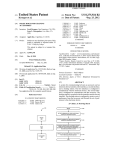
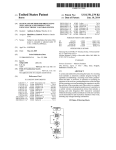


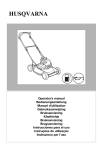

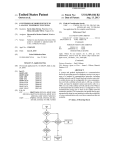
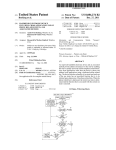
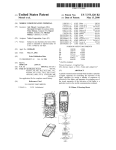
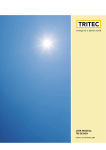
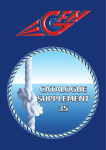
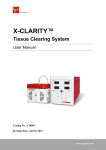
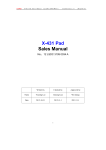
![VTW Software Operation manual[PDF:17.4MB] - FOR](http://vs1.manualzilla.com/store/data/005725901_1-df2c6d7f9199f46fcf33ffa12e63545b-150x150.png)

